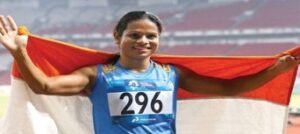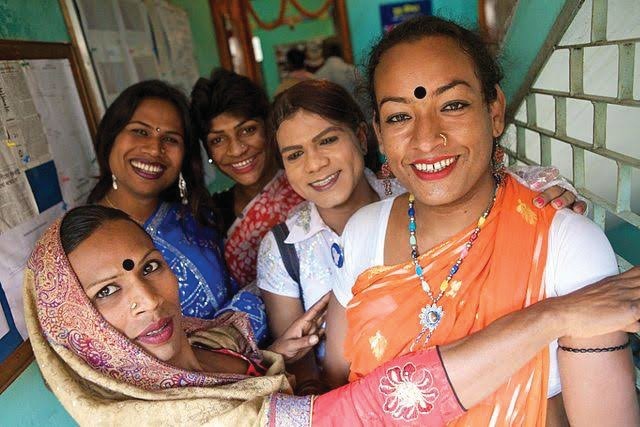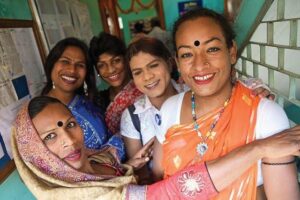The month of June happens to be the Pride Month for the LGBTQIA+ identities in many parts of the world, including in India. The eventful month is dedicated to celebrating the LGBTQIA+ community, their struggles and their victories. The movement had started in 1969 in the United States following the Stonewall Riots of 1969 that were a series of extemporaneous and sporadic demonstrations held by the LGBTQ community in and around New York.
During the Pride Month, one can see processions and rallies with members of the community donning colourful attire and accessories, particularly rainbow-coloured flags and banners. People also colour their faces, carry banners and posters and raise slogans to express their solidarity with the LGBTQIA+ community.
Today, there are several definitions of gender. There is also a general perception that only a few nations are inclusive of the diverse genders in society. Contrary to popular belief, modern-day definitions of gender, the LGBTQIA+ and its many types are not new to India. India, just like most native cultures, has always had several genders and has always been inclusive to the very core.
Debate rampant in ‘Modern’ societies
In 2021, American singer Demi Lovato opened up about her sexual identity saying she identifies herself as pansexual. For many years before that, Demi had already spoken about being bisexual and her search for ‘a human connection’ rather than a man or a woman. After her revelations, discussions on sexual fluidity once again picked up pace.
Lovato had shared the news on Instagram, writing, “Today is a day I’m so happy to share more of my life with you all – I am proud to let you know that I identify as non-binary and will officially be changing my pronouns to they/them moving forward. This has come after a lot of healing and self-reflective work. I’m still learning and coming into myself, and I don’t claim to be an expert or a spokesperson. Sharing this with you now opens another level of vulnerability for me. I’m doing this for those out there that haven’t been able to share who they truly are with their loved ones.”
The struggles in urban set-ups
Back home in India, of late, it’s the coming out of celebrities that brings the much-needed focus on gender issues. Sadly, a few even had to fight violent battles on personal front and in public life. This kind of struggle is primarily an urban phenomenon.
Case in point being Dutee Chand who had to fight two battles and win them both, when most usually succumb to one. In June 2014, when Dutee won two gold medals at Asian Junior Athletics Championships in the 200 m and 4 x 400 m relays, she was expecting to qualify for the Commonwealth Games but was dropped at the last minute after the Athletics Federation of India said that hyperandrogenism made her ineligible to compete as a female athlete.
Chand appealed to the Court of Arbitration for Sport (CAS). “I thought it was a routine dope test. I had no idea about the gender test. I had read in Odia newspapers about it. They said I was not a girl. I was shocked. Many advised medical remedies. But someone advised me to fight it legally. I appealed. The case went on for two years. I got a decree in my favour,” recalls Chand who raised her voice against a discriminatory practice that banned women athletes with high testosterone levels.
But that wasn’t all. A tougher battle was in store for Dutee and it was with regard to her sexual orientation and the derogation associated. So, when she first told her mother about it, she was not convinced. Her sister got hostile towards her.
Acceptance from ‘modern’ society
With the Supreme Court reading down Section 377 and announcing that consensual same-sex relationships were not illegal, she decided to come out and open up about her same-sex relationship. “It was easier for me as I am a celebrity. But for my partner who lives in my hometown, it was hard to face the world,” recalls Dutee.
The fastest Indian woman today asks those in same-sex relationships to be courageous and stand firm. “My partner supported me every time and I have chosen her for my life. People may look at us differently or call us by any name like gay, lesbian etc. That does not matter so far as we get to spend our lives with each other,” she says.
“For all who are in love but afraid of the world you must show courage because the world has always taken time to accept all good things,” she maintains. “So, please do not be afraid because it is your life and happiness.”
After her disclosure, Dutee went on to become the first Indian woman track and field athlete to clinch a gold in the World University Games. She is a national record holder in women’s 100 m with a time of 11.26 seconds. She also won a silver each in 100 m and 200 m in the 2018 Asian Games.
The scriptures of inclusion
The concept of gender fluidity is prevalent in Vedic scriptures and the Upanishadas. The very name Ardhanarishvara
 Dutee Chand had to fight a tough public
Dutee Chand had to fight a tough publicbattle with regard to her sexual orientation
that means ‘the God who is half woman’ says it all. Ardhanarishvara is also known by other names across India, over the ages, like Ardhanaranari (the half man-woman), Ammiappan in Tamil Nadu meaning mother-father), Ardhanarisha (the God who is half woman), Ardhanarinateshvara (the God of Dance, who is half-woman), Naranari (man-woman), and Ardhayuvatishvara in Assam, the God whose half is a young woman or girl.
Why, the concept of Ardhanarishvara symbolises the male and female principles are actually inseparable. The male half of Ardhanarishvara stands for Purusha—the male principle and passive force of the universe and Prakriti—the female active force, both of which are ‘constantly drawn to embrace and fuse with each other, though… separated by the intervening axis’.
Sanskrit which is one of the oldest languages in the world uses three genders: Masculine, feminine and gender-neutral. The concept of ‘tritiyaprakriti’ or ‘napumsaka’ had been an integral part of the Hindu mythology, folklore and scriptures.
There are several Hindu deities that are shown to be gender-fluid. Also, same-sex relationships and gender variance have been integral to Hinduism as evident in Vedic scriptures, rituals, religious or narrative mythologies, sculptures, etc.
One of the earliest reference to transgender in ancient scriptures is that of Mohini – Lord Vishnu’s female avatar. In Mahabharata, the first appearance of Mohini is described when the devas and asuras churned the ocean with the assistance of Vishnu as the Kurma (tortoise) avatar to acquire the elixir of immortality.
In post-colonial India, we have developed the unflinching concepts of gender and strict outlining of the sexes into compartments. Anything that transgresses its boundaries is immoral, looked down upon and borders on illegality. Which is why in pre-Independent India, a lot of gays were actually booked under Section 377 on flimsy grounds too, and punished. The recent Supreme Court reading of the section was necessitated owing to this faulty perception.
For every Demi Lovato, India, has a lot of celluloid icons like Rituparno Ghosh, whose works in the genres of womanhood, homosexuality and gender; Kalki Subramaniam – the first transgender in India to do a lead role in a motion picture; transgender actress Pakhi Sharma aka Bobby Darling and the genre of ‘gay’ films with ‘homosexual’ characterisation introduced by filmmaker Karan Johar have been truly immortalised beyond the proverbial ‘coming out’. It is, in pseudo-traditional homes, that the hypocrisy be called out.


